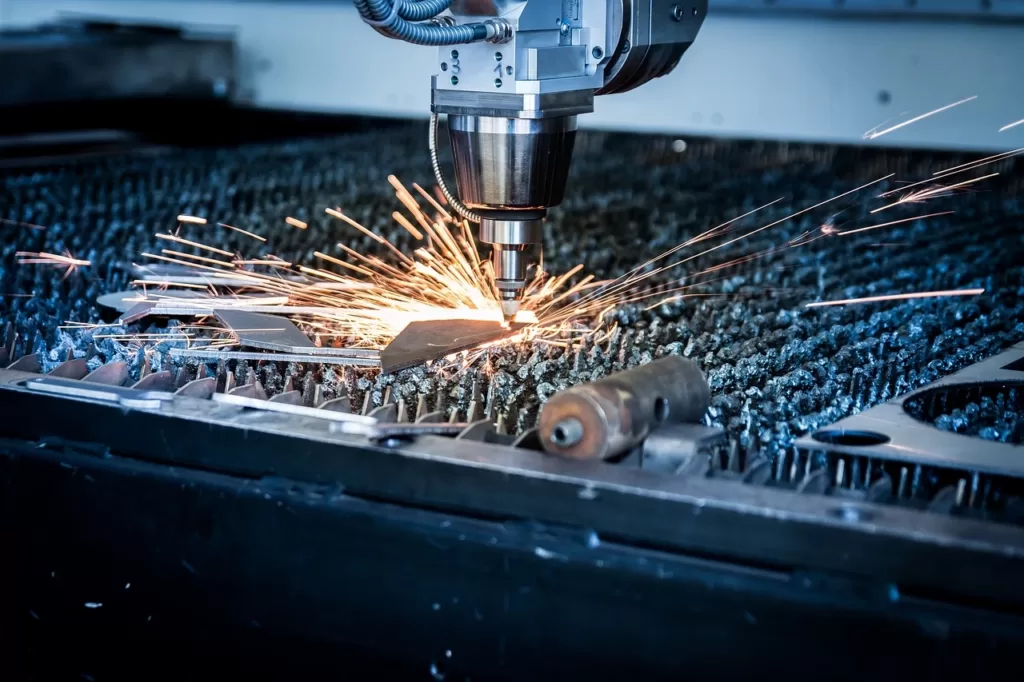In the ever-evolving landscape of technology, few innovations have had as profound an impact as lasers. These powerful beams of focused light have transformed industries, from medicine to manufacturing, entertainment to environmental science. In this comprehensive guide, we will delve into the fascinating world of laser technology, exploring its history, diverse applications, and the promises it holds for the future.
Table of Contents
Illuminating the Basics
1.1 What is Laser Technology?
Lasers are a marvel of modern science, but what exactly are they? Laser technology is fundamentally based on the principles of light amplification through stimulated emission of radiation. Unlike ordinary light, laser light is coherent, meaning it consists of waves that are in phase with each other, resulting in a concentrated, powerful beam.
1.2 A Brief History of Laser Development
To truly appreciate the significance of lasers, we need to journey back in time. The history of laser development is a captivating story of scientific curiosity and innovation. It all began with Albert Einstein’s theory of stimulated emission, which laid the foundation for the laser’s invention. Over the years, brilliant minds like Theodore Maiman and Arthur Schawlow brought this theory to life, paving the way for laser technology as we know it today.
Healing with Precision
2.1 Laser Surgery: A Cut Above
The medical field has witnessed a revolution with the advent of laser surgery. These precise beams of light have enabled surgeons to perform intricate procedures with minimal scarring and faster recovery times. From eye surgeries to delicate tissue work, lasers have become indispensable in the operating room.
2.2 Diagnostic Brilliance: Laser Imaging in Medicine
In the realm of diagnostics, lasers play a crucial role in imaging. They provide exceptional clarity in medical imaging, aiding in the early detection of diseases and the development of treatment plans. With laser technology, doctors can explore the human body in ways that were once unimaginable.
Manufacturing Marvels

Image by Michal Jarmoluk from Pixabay
3.1 Precision in Production: Laser Cutting and Welding
Manufacturing has undergone a transformation thanks to lasers. These tools offer unmatched precision in cutting and welding processes. Industries ranging from automotive to aerospace now rely on lasers for intricate and flawless results.
3.2 Building the Future: 3D Printing with Lasers
The world of 3D printing has also embraced laser technology. By using lasers to sinter or melt materials together, 3D printers can create intricate and complex designs with remarkable precision. This innovation has opened new doors for industries such as architecture and product design.
Entertainment and Artistry
4.1 Dazzling Displays: Laser Light Shows
Entertainment takes center stage with mesmerizing laser light shows. These displays of dazzling colors and patterns captivate audiences worldwide. Whether at concerts, festivals, or special events, lasers offer creative possibilities that continue to expand.
4.2 Art Beyond Canvas: Laser Artistry
Artists have found a unique medium in lasers. Laser art installations push the boundaries of creativity, transforming spaces into immersive experiences. From interactive exhibits to breathtaking light sculptures, laser artistry is redefining the art world.
Protecting Our Planet
5.1 Laser Precision for Environmental Monitoring
Laser technology plays a vital role in environmental monitoring. It offers unmatched precision in measuring various environmental parameters. From tracking climate change to conserving endangered species, lasers are indispensable tools in safeguarding our planet.
5.2 Analyzing the Elements: Laser-Induced Breakdown Spectroscopy (LIBS)
Analytical chemistry benefits greatly from laser-induced breakdown spectroscopy (LIBS). This technology allows scientists to analyze the composition of materials with remarkable accuracy. Its applications extend from environmental analysis to forensics.
The Future Unveiled
6.1 Emerging Trends in Laser Technology
The world of laser technology is constantly evolving. New advancements are on the horizon, promising even more incredible applications. From quantum computing to advanced communication systems, staying ahead of these emerging trends is crucial for industry leaders and enthusiasts alike.
6.2 Ethical Considerations and Responsible Innovation
While laser technology offers boundless potential, it also raises ethical concerns. Responsible innovation is key to ensuring that lasers are used safely and ethically. This chapter explores the importance of ethical considerations and risk mitigation in the development and deployment of laser technology.
Conclusion: Lighting the Path Forward
In conclusion, laser technology has revolutionized multiple industries, offering precision, efficiency, and creative possibilities. From medicine to manufacturing, entertainment to environmental science, lasers continue to push the boundaries of innovation. As we move forward, it is imperative that we embrace these advancements responsibly, ensuring a brighter and more sustainable future.
FAQs
1. How do lasers work?
Lasers work by amplifying light through stimulated emission, resulting in a concentrated and coherent beam of light.
2. What are the key applications of laser technology in medicine?
Laser technology is used in medicine for surgeries, diagnostics, and medical imaging, offering precision and faster recovery times.
3. How have lasers impacted the manufacturing industry?
Lasers have revolutionized manufacturing with their precision in cutting, welding, and 3D printing processes.
4. What are some unique uses of lasers in art?
Laser artistry includes dazzling light shows and immersive installations that redefine traditional art forms.
5. How do lasers contribute to environmental monitoring?
Laser technology aids in accurate environmental monitoring, benefiting climate research and conservation efforts.

